Tom's Hardware Verdict
The EVGA SuperNOVA 1000 P6 achieves high performance, and its build quality is high. However, its less-expensive sibling, the G6, is a bit quieter.
Pros
- +
+ Full power at 47 degrees Celsius
- +
+ High overall performance
- +
+ Good build quality
- +
+ Tight load regulation
- +
+ Highly efficient at super-light loads
- +
+ Long hold-up time
- +
+ Low inrush current with 115V
- +
+ Not noisy at normal operating conditions
- +
+ Fully modular
- +
+ Loads of connectors
- +
+ Compatible with the alternative sleep mode
- +
+ Compact dimensions
- +
+ 10-year warranty
Cons
- -
Noisier than its less-efficient sibling
- -
Efficiency under normal loads could be higher
- -
High inrush current with 230V
- -
Not efficient 5VSB rail
- -
Some EMI spikes
- -
The APFC converter needs tuning
- -
Small distance between connectors
Why you can trust Tom's Hardware
The EVGA SuperNOVA 1000 P6 uses a modified Seasonic Focus Platinum platform; hence it has small dimensions and achieves high performance, while its build quality is satisfactory. Efficiency and the APFC converter need a boost, though, and, weirdly, the average noise output is notably higher than the less efficient 1000 G6. Given the 40 dollars difference between the 1000 P6 and G6 models, we suggest investing in the latter. This means that there is no room for the 1000 P6 in our best PSUs article.
EVGA's new P6 line consists of four models ranging from 650W to 1000W. This review will evaluate the flagship model of the line, which has enough power to support an Nvidia RTX 3090 graphics card if you can find one. For its G6 and P6 lines, EVGA turned to Seasonic and used upgraded versions of the Focus platform. The new feature added is the hybrid (Hardware & Firmware) over power protection (OPP). An analog IC handles hardware OPP, and an MCU is responsible for the firmware OPP. The first is designed to trip when power output exceeds 135% for a few nanoseconds, while the latter trips once power exceeds 125% for more extended periods, in the millisecond range.









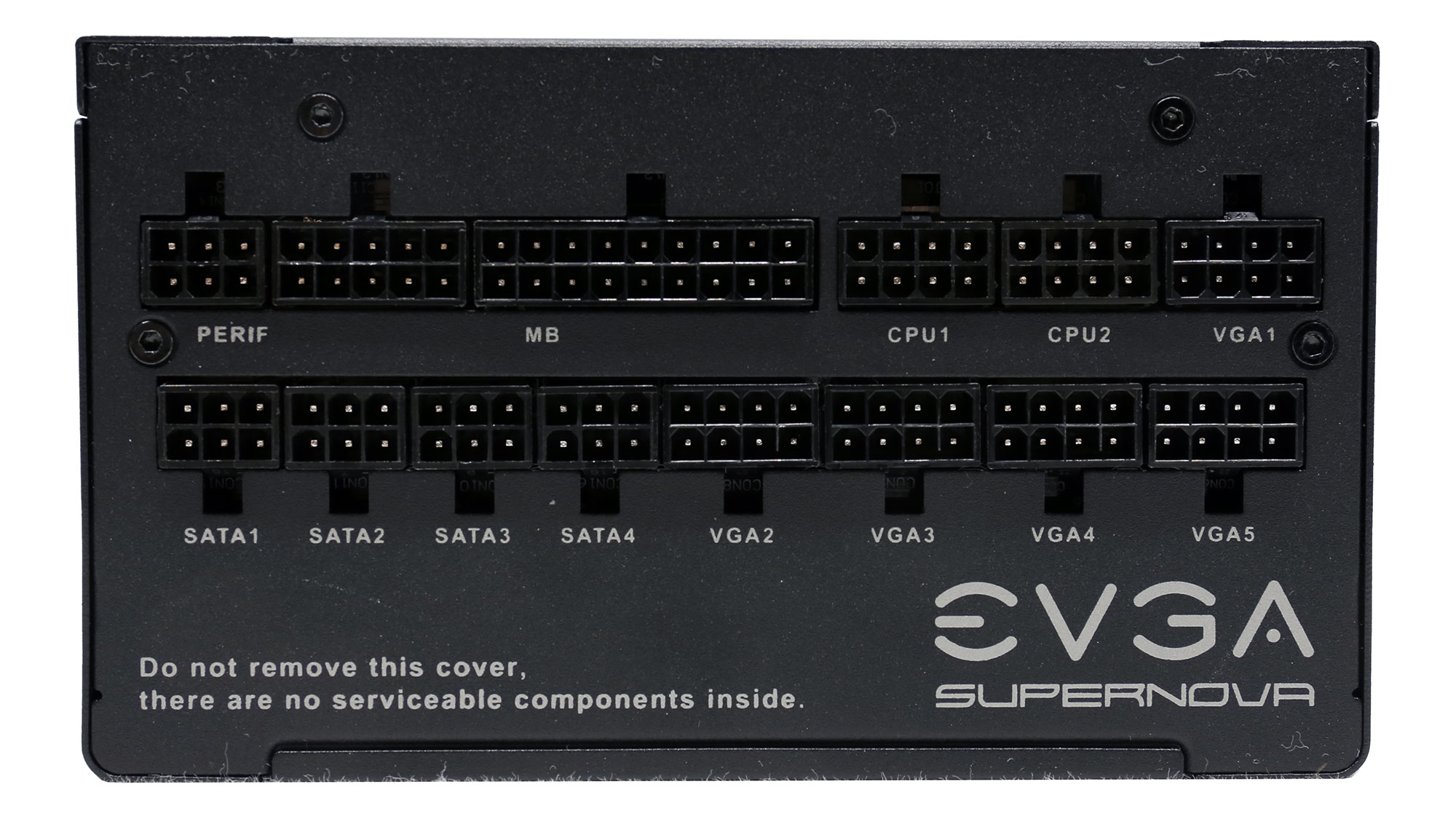



The 1000 P6 has super-compact dimensions, measuring only 140mm in depth. An extended, ten-year warranty also supports it. Its cooling handles an FDB fan, typically provided by Hong Hua, which dominates the market. The PSU is rated Platinum in both 80 PLUS and Cybenetics, and it is also rated as Cybenetics Standard++ in noise output.

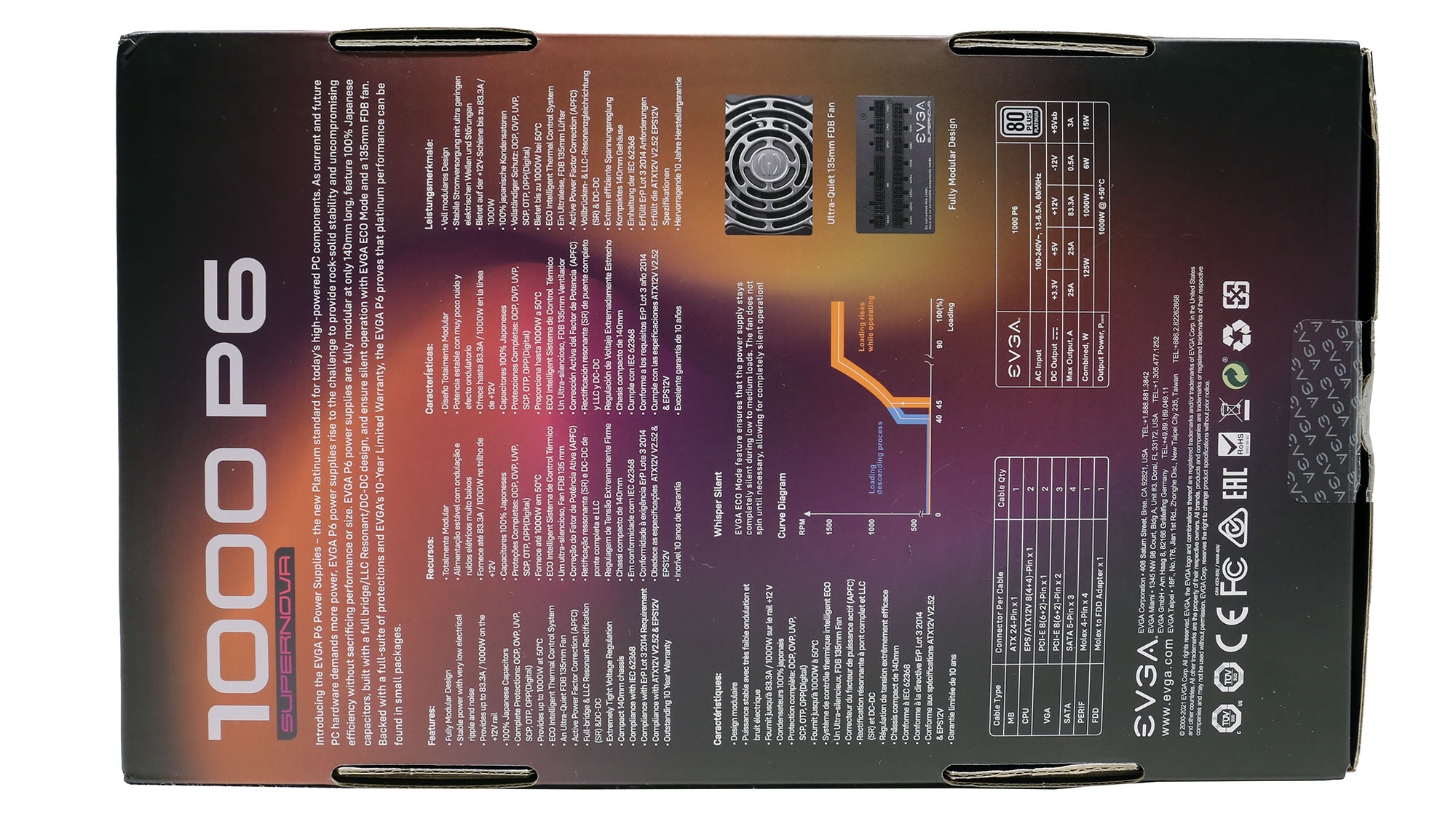
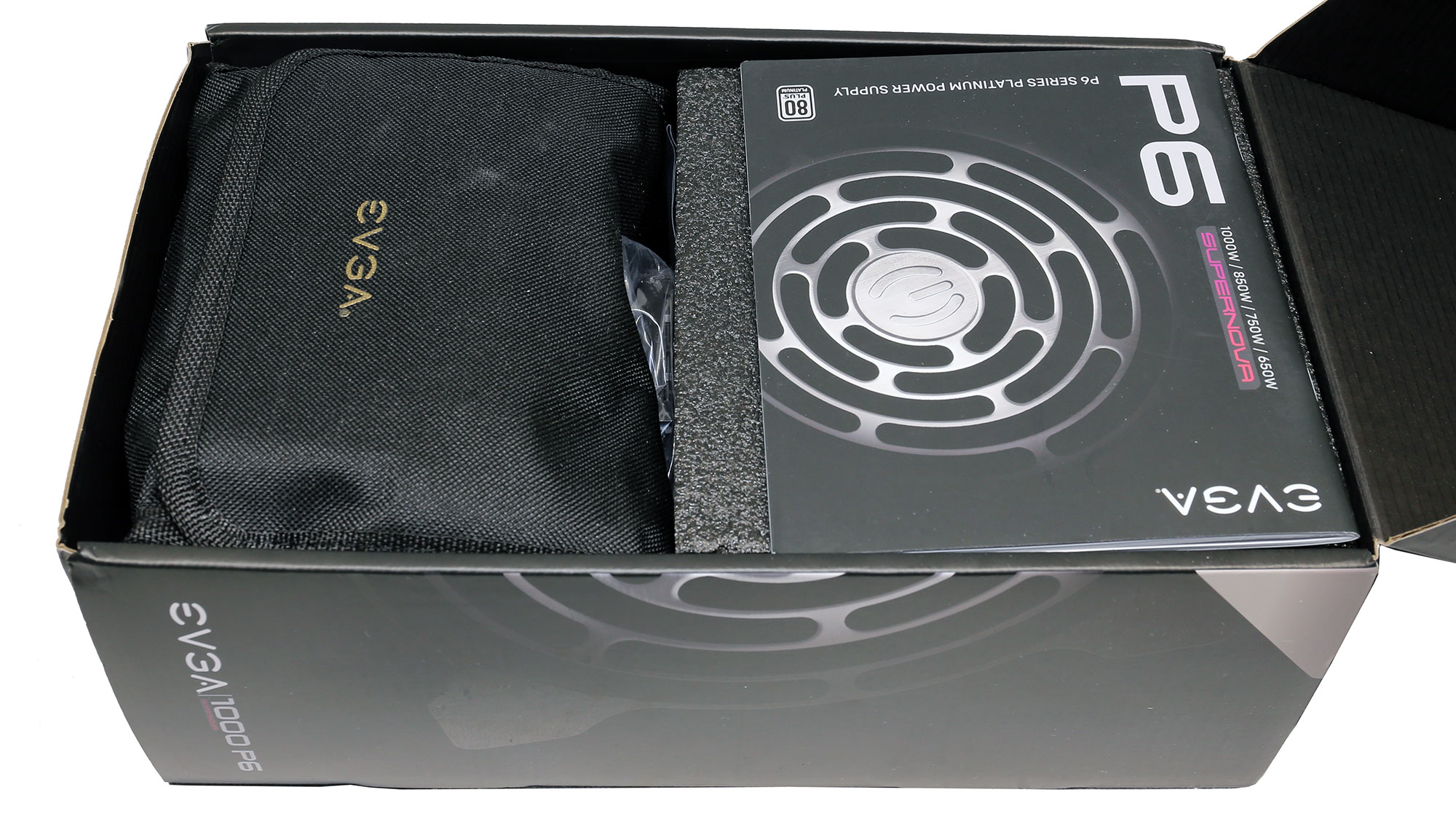




Specifications
| Manufacturer (OEM) | Seasonic |
| Max. DC Output | 1000W |
| Efficiency | 80 PLUS Platinum, Cybenetics Platinum (88-91%) |
| Noise | Cybenetics Standard++ (30-35 dB[A]) |
| Modular | ✓ (fully) |
| Intel C6/C7 Power State Support | ✓ |
| Operating Temperature (Continuous Full Load) | 0 - 40°C |
| Over Voltage Protection | ✓ |
| Under Voltage Protection | ✓ |
| Over Power Protection | ✓ |
| Over Current (+12V) Protection | ✓ |
| Over Temperature Protection | ✓ |
| Short Circuit Protection | ✓ |
| Surge Protection | ✓ |
| Inrush Current Protection | ✓ |
| Fan Failure Protection | ✗ |
| No Load Operation | ✓ |
| Cooling | 135mm Fluid Dynamic Bearing Fan (HA13525H12F-Z) |
| Semi-Passive Operation | ✓ (selectable) |
| Dimensions (W x H x D) | 150 x 85 x 140mm |
| Weight | 1.71 kg (3.77 lb) |
| Form Factor | ATX12V v2.52, EPS 2.92 |
| Warranty | 10 Years |
Power Specifications
| Rail | 3.3V | 5V | 12V | 5VSB | -12V | |
| Max. Power | Amps | 25 | 25 | 83.3 | 3 | 0.5 |
| Watts | 125 | 1000 | 15 | 6 | ||
| Total Max. Power (W) | 850 |
Cables and Connectors
| Description | Cable Count | Connector Count (Total) | Gauge | In Cable Capacitors |
|---|---|---|---|---|
| ATX connector 20+4 pin (610mm) | 1 | 1 | 18-22AWG | No |
| 4+4 pin EPS12V (700mm) | 2 | 2 | 18AWG | No |
| 6+2 pin PCIe (700mm+125mm) | 3 | 6 | 16-18AWG | No |
| 6+2 pin PCIe (700mm) | 2 | 2 | 18AWG | No |
| SATA (550mm+100mm+100mm) | 4 | 12 | 18AWG | No |
| 4-pin Molex (550mm+100mm+100mm+100mm) | 1 | 4 | 18AWG | No |
| FDD Adapter (105mm) | 1 | 1 | 22AWG | No |
| AC Power Cord (1400mm) - C13 coupler | 1 | 1 | 16AWG | - |
Plenty of cables and connectors are provided, including two EPS, eight PCIe, twelve SATA, and four 4-pin Molex connectors. There is also a Berg adapter in the bundle. There are no in-cable caps, and only the cables hosting a pair of PCIe connectors use thicker, 16AAWG gauges up to the first connector. Finally, the distance between the peripheral connectors is small at 100mm. These PSUs are for large chassis, where peripheral devices can be installed further away than 100mm, from each other.
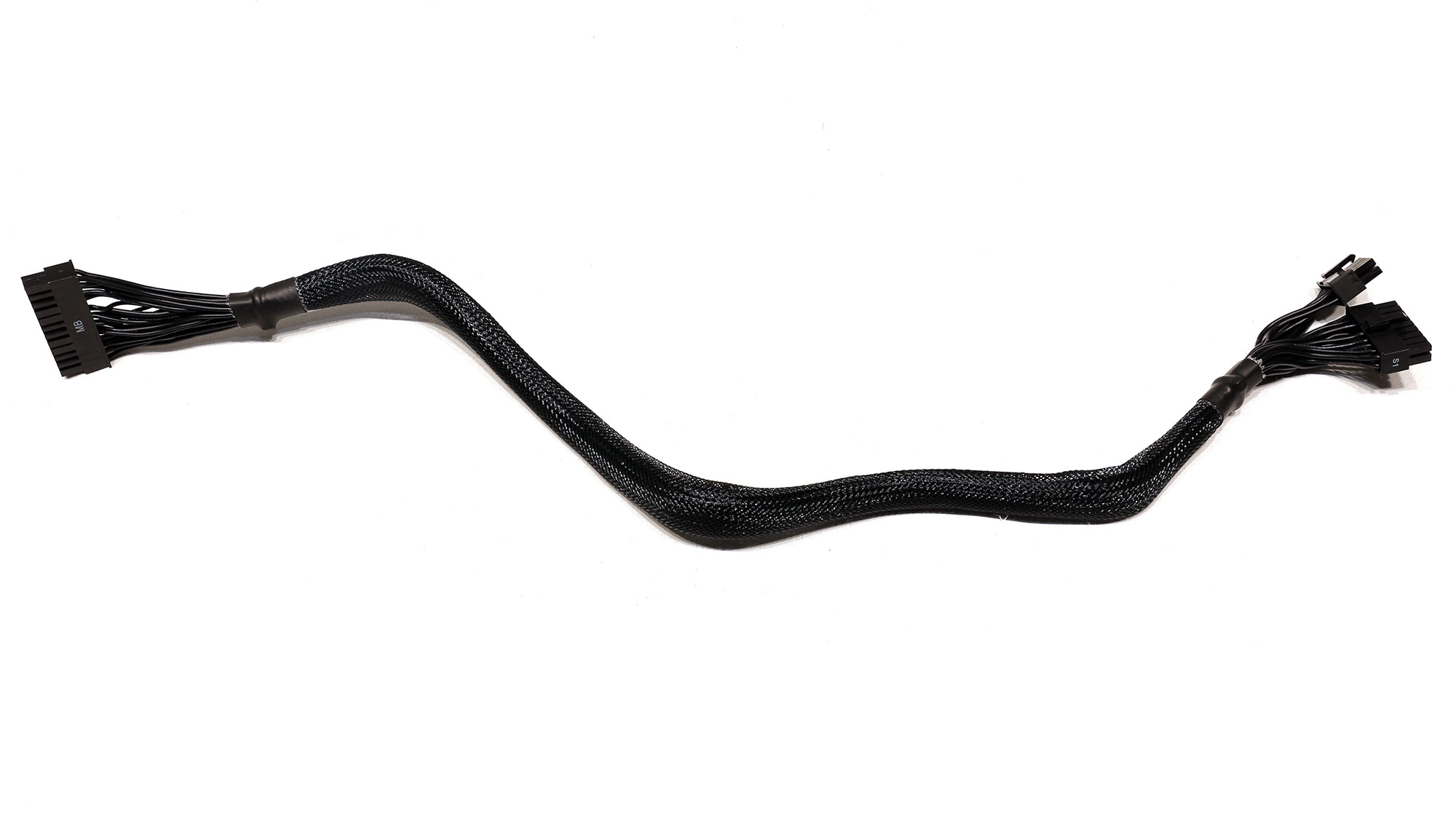






Component Analysis
We strongly encourage you to have a look at our PSUs 101 article, which provides valuable information about PSUs and their operation, allowing you to better understand the components we're about to discuss.
| General Data | - |
| Manufacturer (OEM) | Seasonic |
| PCB Type | Double Sided |
| Primary Side | - |
| Transient Filter | 4x Y caps, 2x X caps, 2x CM chokes, 1x MOV, 1x Champion CM02X (Discharge IC) |
| Inrush Protection | NTC Thermistor MF72-5D20L (5 Ohm) & Relay |
| Bridge Rectifier(s) | 2x Vishay GBUE2560 (600V, 25A @ 140°C) |
| APFC MOSFETs | 2x Infineon IPA60R099P6 (600V, 24A @ 100°C, Rds(on): 0.099Ohm) |
| APFC Boost Diode | 1x Infineon IDH10G65C6 (650V, 10A @ 140°C) |
| Bulk Cap(s) | 2x Nippon Chemi-Con (420V, 470uF each or 940uF combined, 2,000h @ 105°C, KMZ) |
| Main Switchers | 4x Infineon IPA60R125P6 (600V, 19A @ 100°C, Rds(on): 0.125Ohm) |
| APFC Controller | Champion CM6500UNX |
| Resonant Controller | Champion CU6901V |
| Topology |
Primary side: APFC, Full-Bridge & LLC converter Secondary side: Synchronous Rectification & DC-DC converters |
| Secondary Side | - |
| +12V MOSFETs | 6x Nexperia PSMN1R0-40YLD (40V, 198A @ 100°C, Rds(on): 1.93mOhm) |
| 5V & 3.3V | DC-DC Converters: 6x PWM Controller(s): ANPEC APW7159C |
| Filtering Capacitors |
Electrolytic: 6x Nippon Chemi-Con (2-5,000h @ 105°C, KZE), 1x Nippon Chemi-Con (5-6,000h @ 105°C, KZH), 3x Nippon Chemi-Con (4-10,000h @ 105°C, KY), 2x Rubycon (3-6,000h @ 105°C, YXG) |
| Supervisor IC | Weltrend WT7527RA (OCP, OVP, UVP, SCP, PG) & Weltrend WT51F104 (Firmware OPP) |
| Fan Controller | Weltrend WT51F104 |
| Fan Model | Hong Hua HA13525H12F-Z (135mm, 12V, 0.50A, Fluid Dynamic Bearing Fan) |
| 5VSB Circuit | - |
| Rectifier | 1x MCC MRB1045ULPS SBR (45V, 10A) |
| Standby PWM Controller | Excelliance MOS EM8569C |

Overall Photos
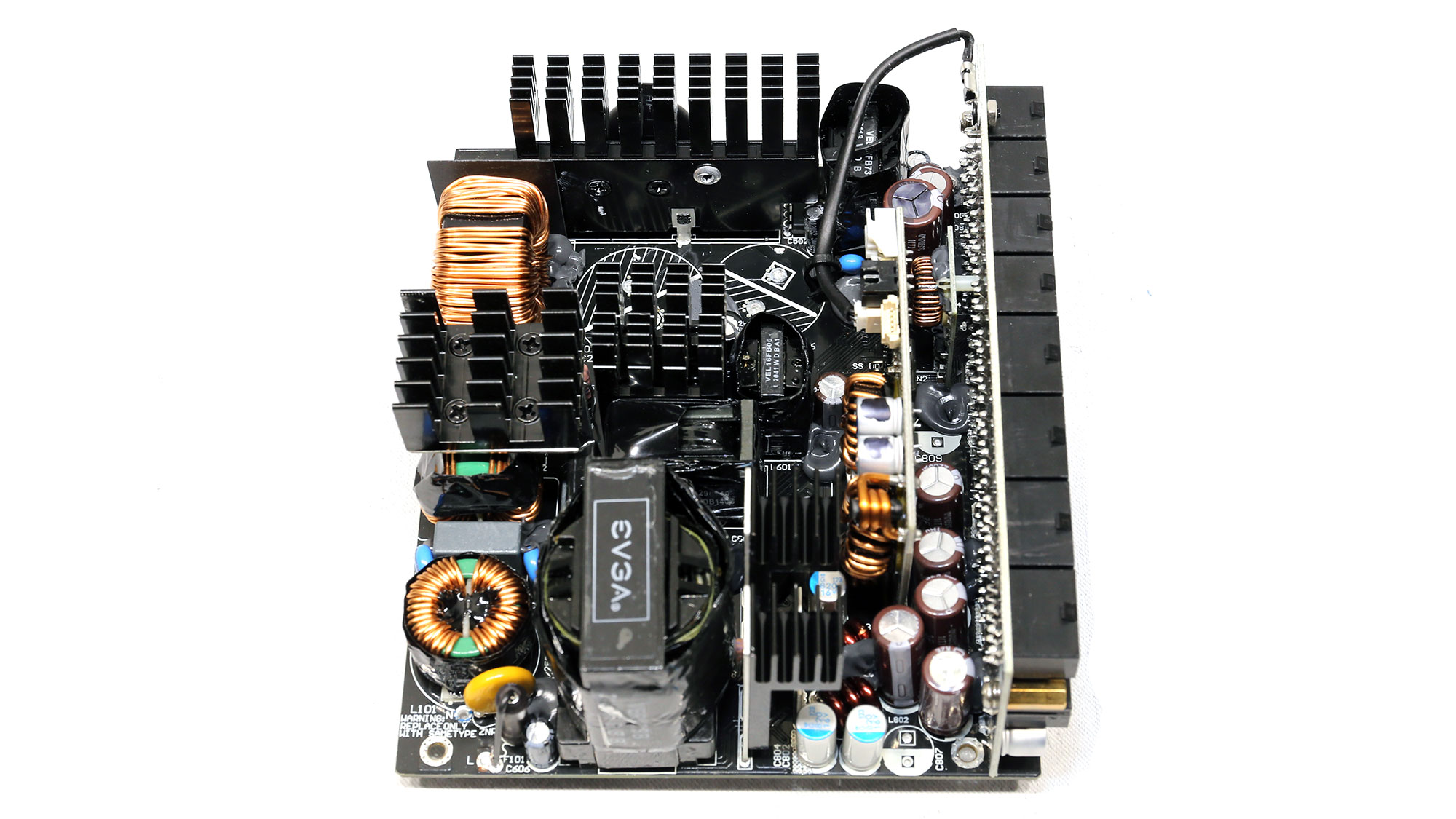


The small PCB is over-populated with parts; hence the cooling fan will have to operate at high speeds to provide enough airflow, inevitably leading to increased operating noise. The unit features an MCU which, besides the firmware OPP, as EVGA calls it, also handles over-temperature protection and controls the fan's speed.
As with the G6 platform, a single wire is used for an NTC thermistor that provides information on the MCU hosted on the same daughter-board with the DC-DC converters. This connection should be routed through the PCB and not through a wire, which blocks, in a degree at least, airflow. A PCB redesign is required for this, which doesn't come cheap, though.
Get Tom's Hardware's best news and in-depth reviews, straight to your inbox.

Transient filter




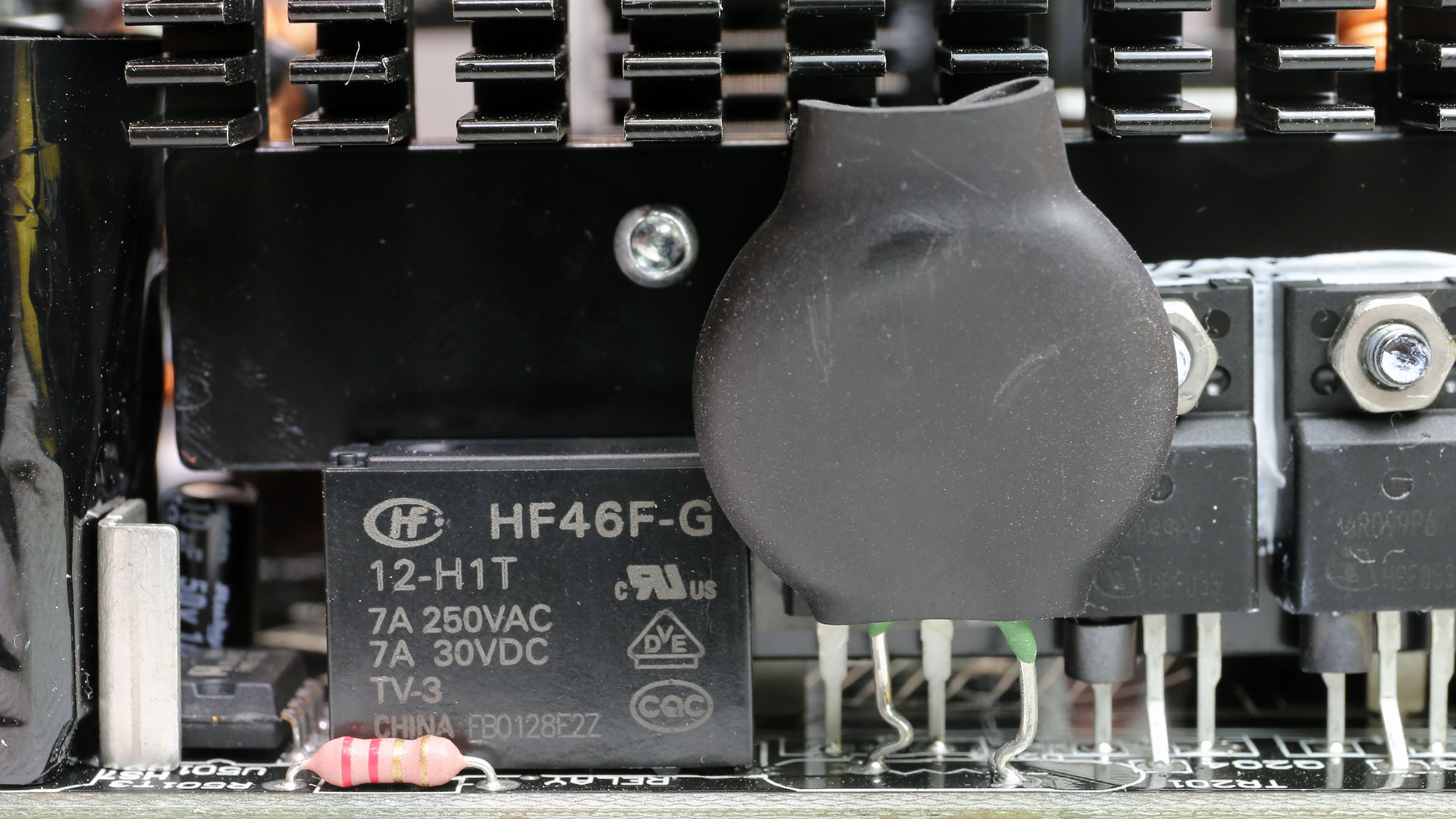
The transient filter includes all necessary parts, but we found some EMI spikes. The input filter consists of an MOV for protection against voltage surges, and we also found an NTC thermistor and relay combination for suppressing high inrush currents.

Bridge rectifiers

The bridge rectifiers are powerful; combined, they can handle up to 50A of current.

APFC converter



The APFC converter uses two Infineon FETs and a single boost diode. The bulk caps are by Chemi-Con, and their combined capacity reaches 940uF.
The APFC controller is the Champion CM6500UN, offering higher performance than the CM6502.
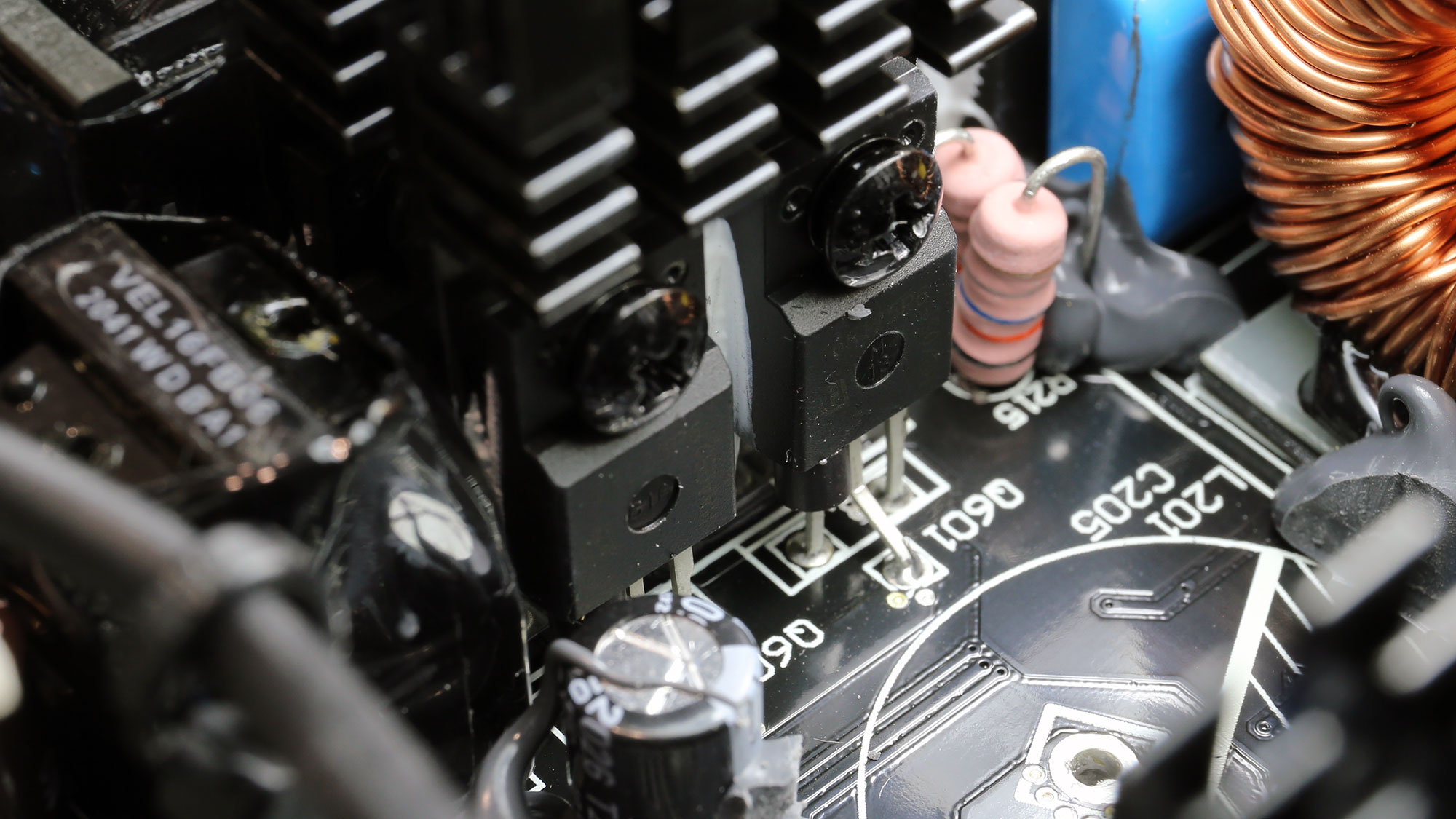
Main FETs and primary transformer
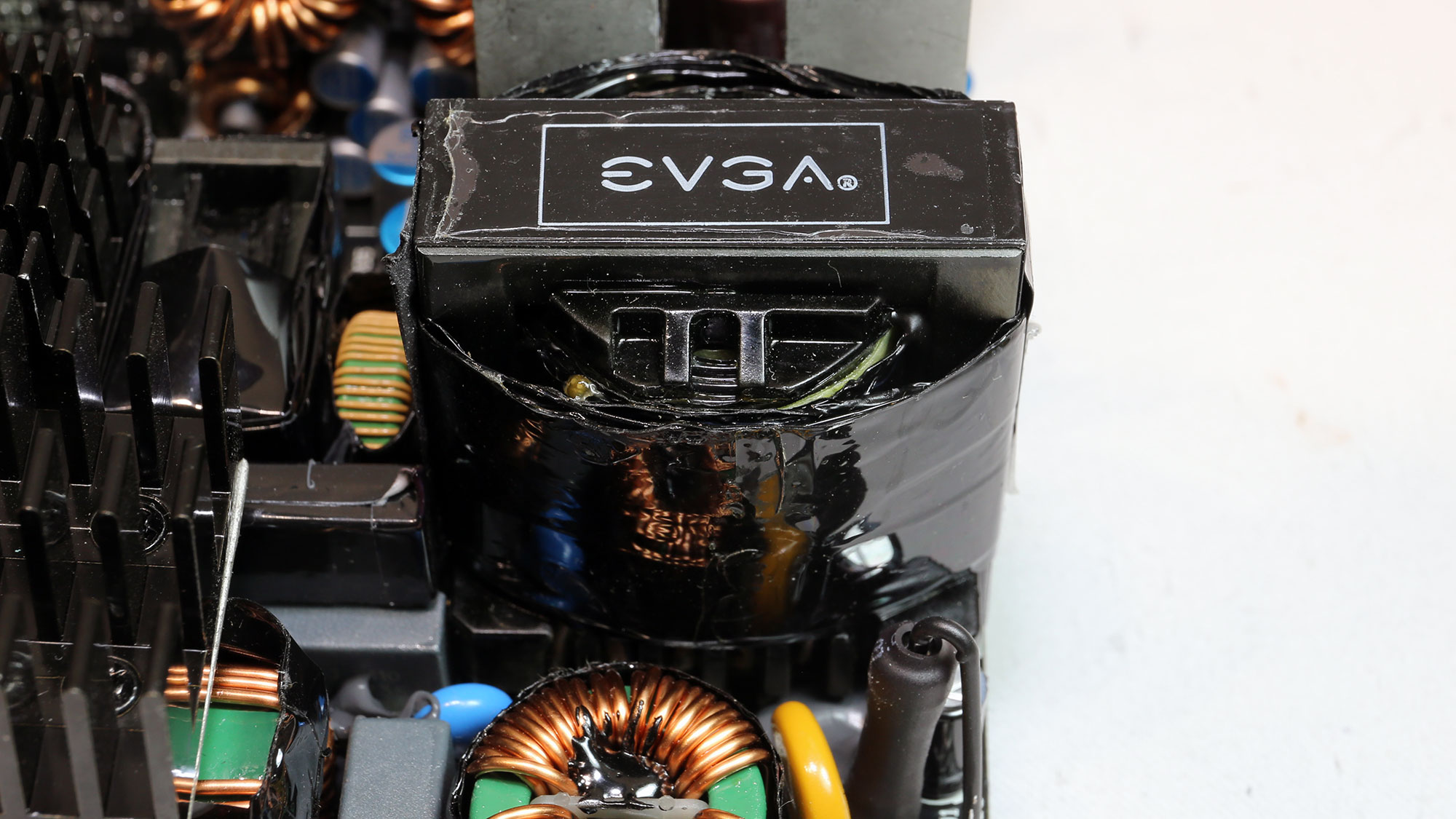
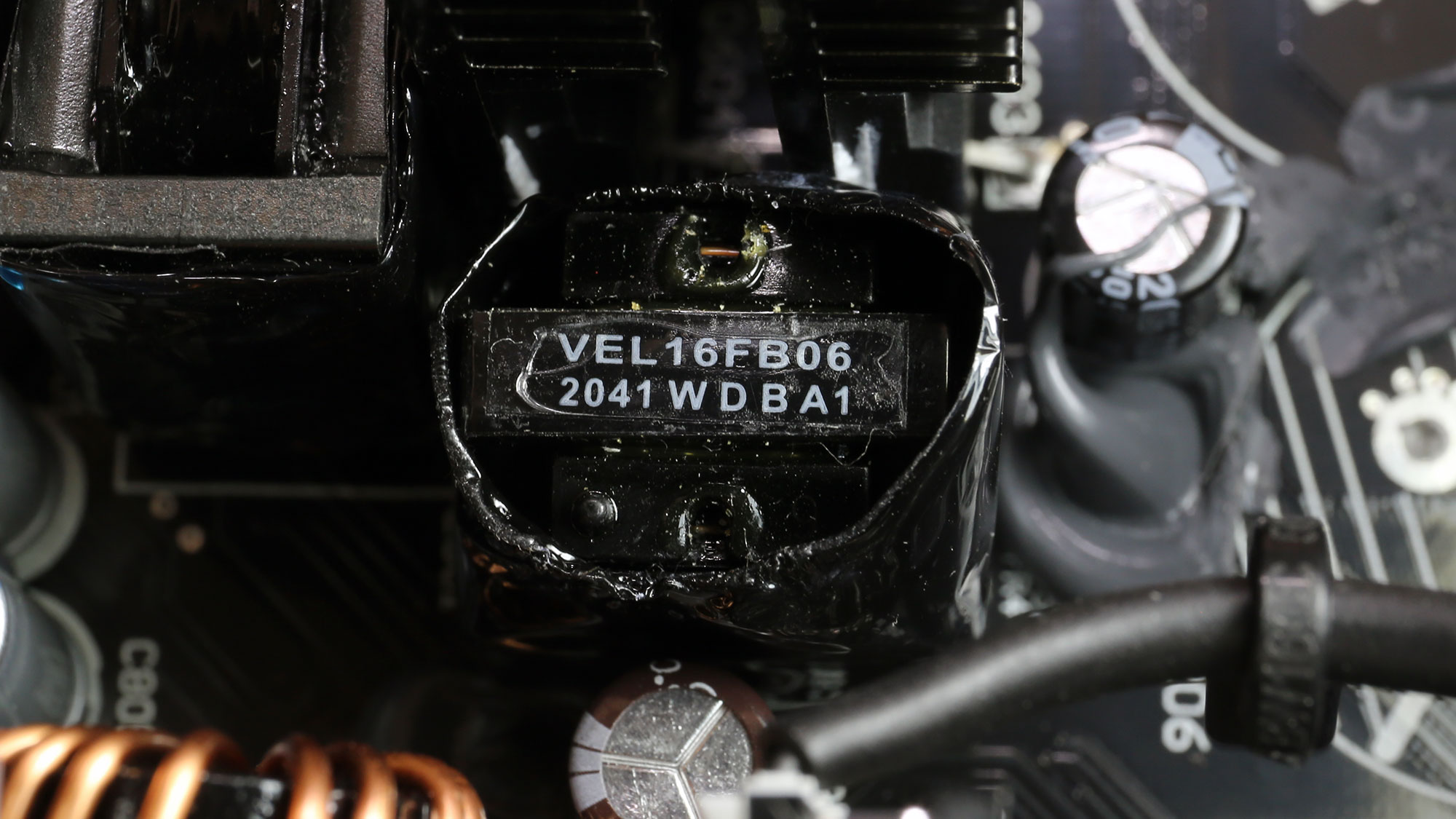
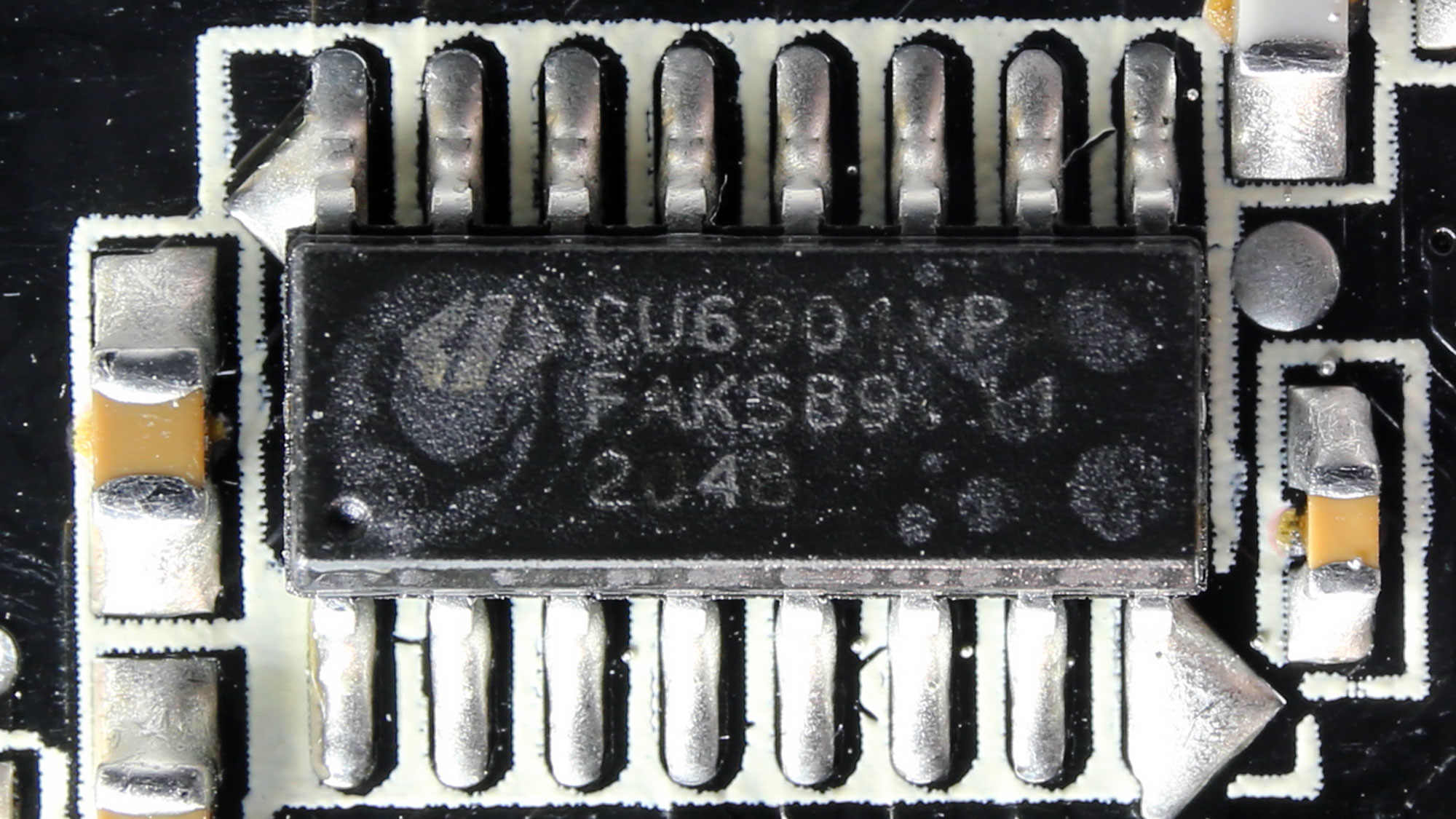
The main FETs are installed into a full-bridge topology, and an LLC resonant converter is also used to boost efficiency. The resonant controller is the Champion CU6901V, supporting burst operation for higher efficiency at super-light loads.

12V FETs and VRMs

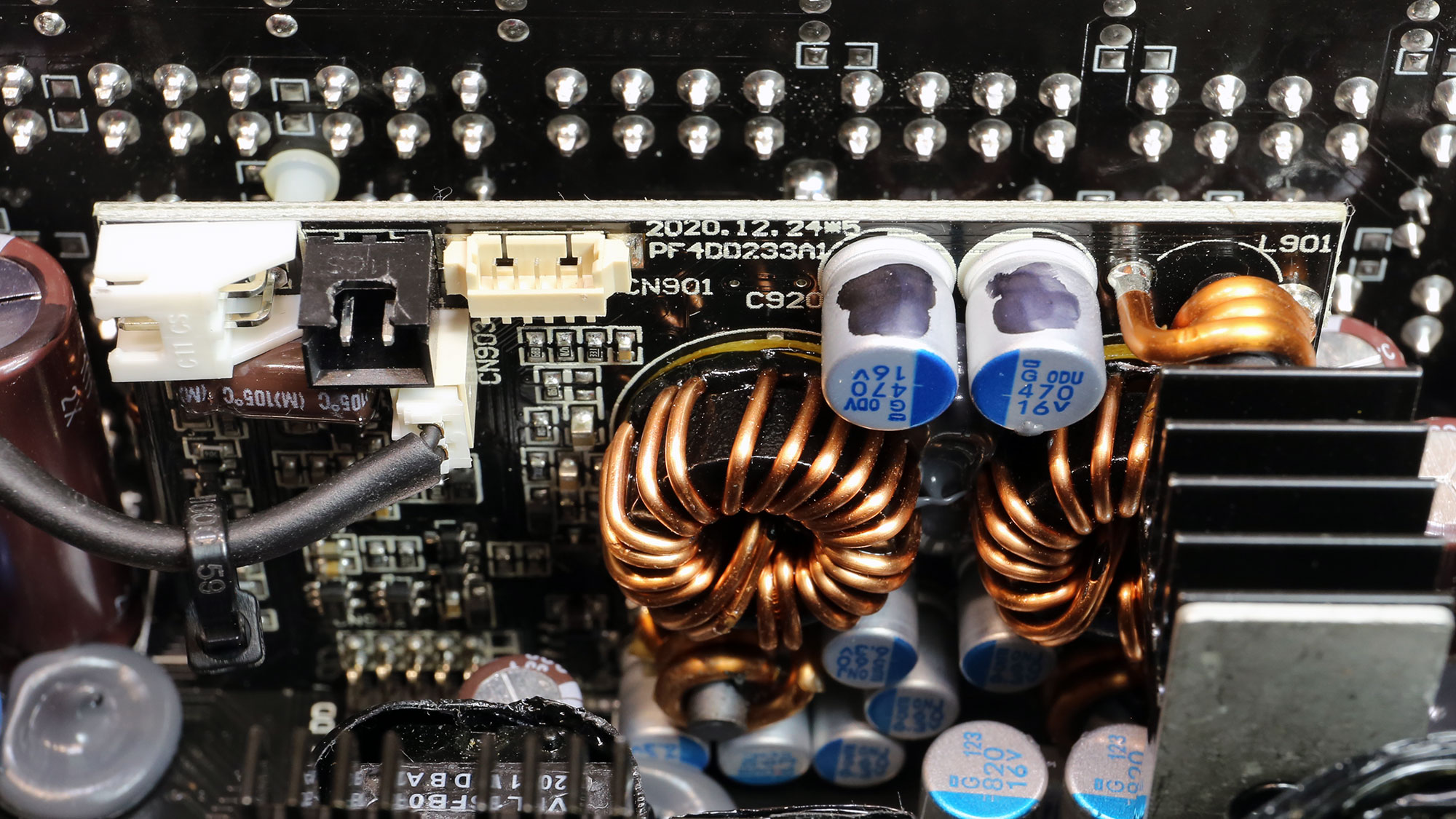

The 12V FETs come in contact with the PSU's chassis through a thermal pad. Typically, the minor rails are generated through a pair of DC-DC converters.

Filtering caps
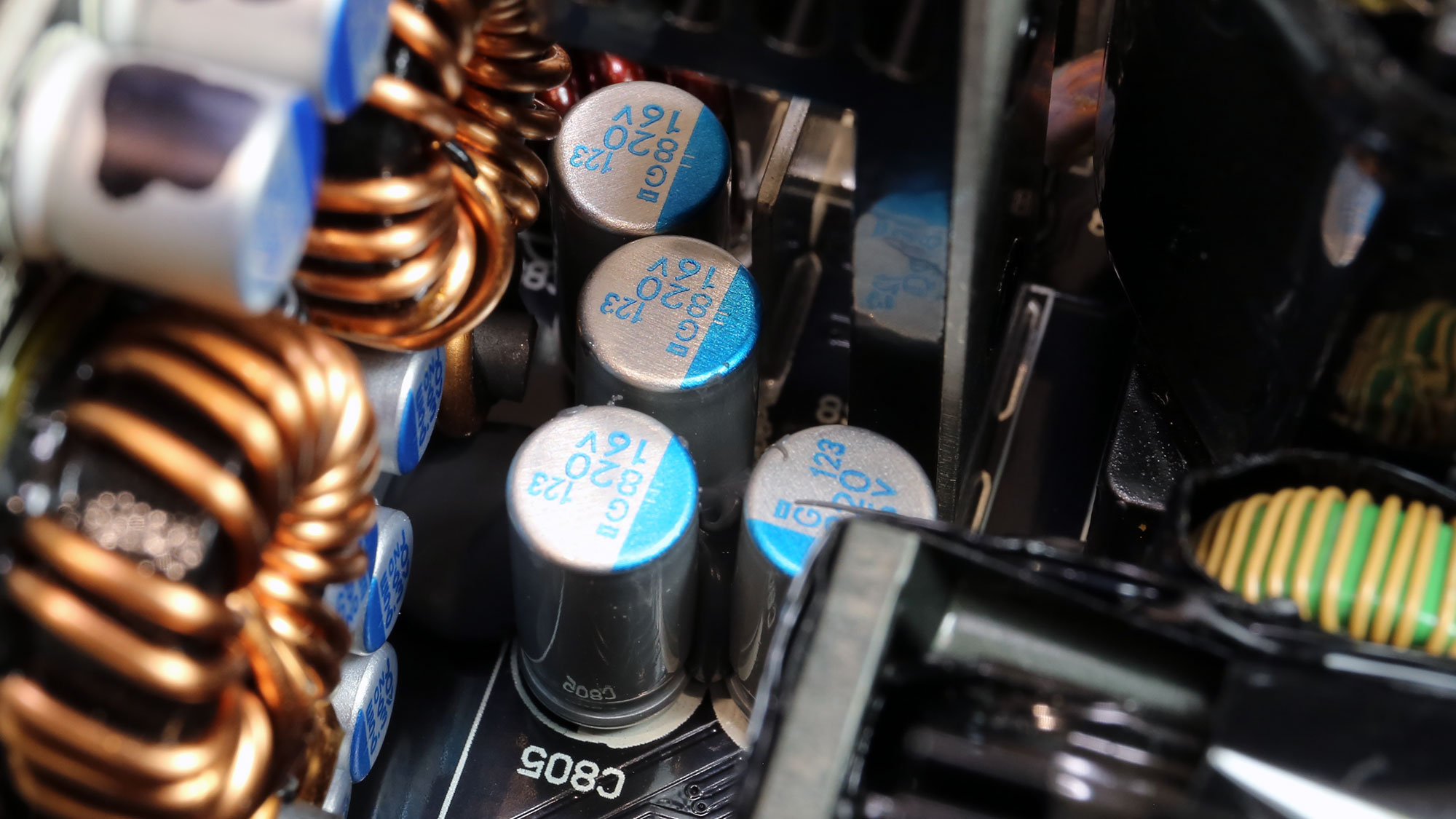
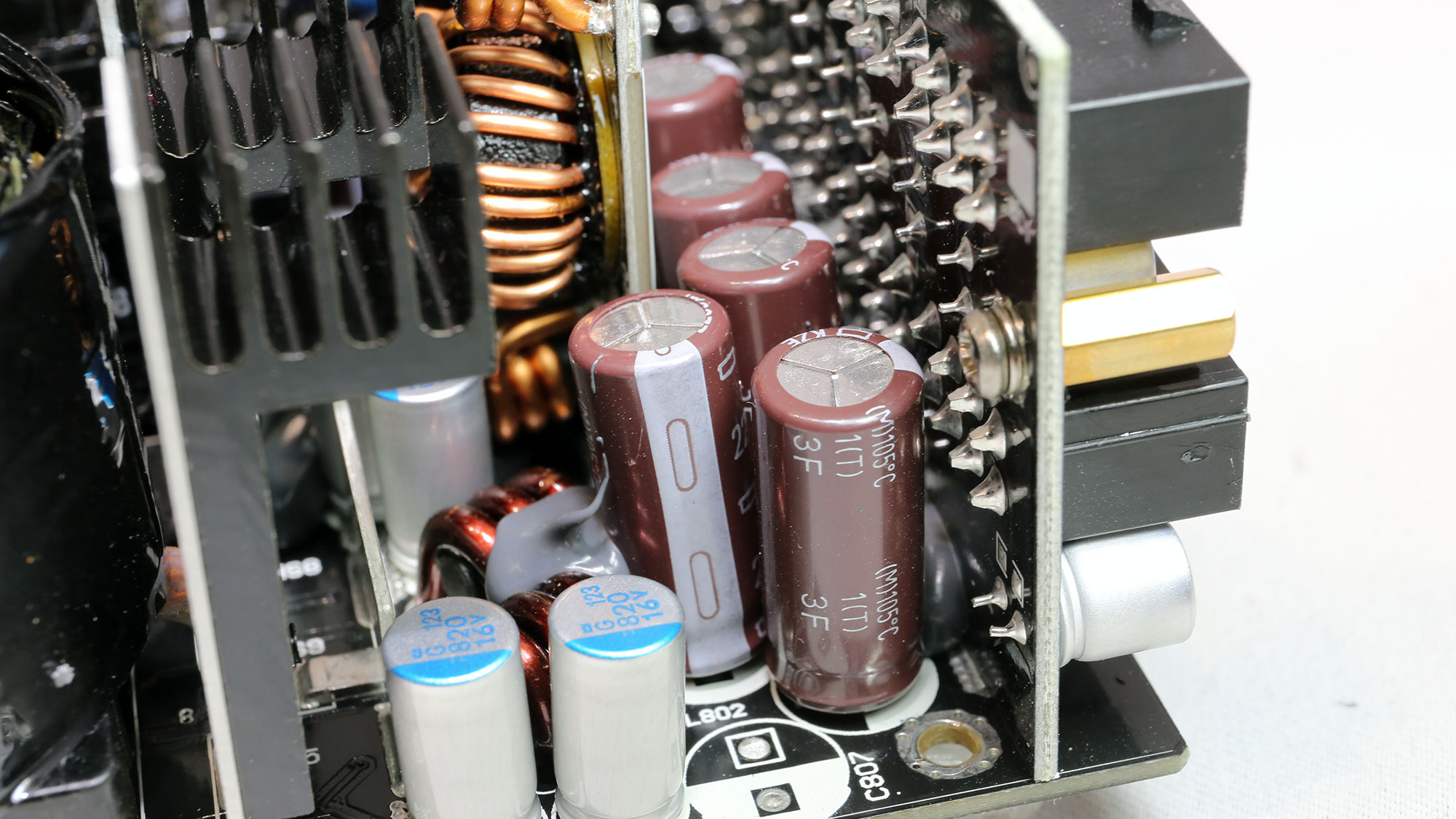
Japanese manufacturers provide the filtering caps. Besides electrolytic caps, many polymer caps are also used.

5VSB Circuit


The standby PWM controller Excelliance MOS EM8569C. An SBR rectifier is used on the 5VSB rail's secondary side.

Modular Board
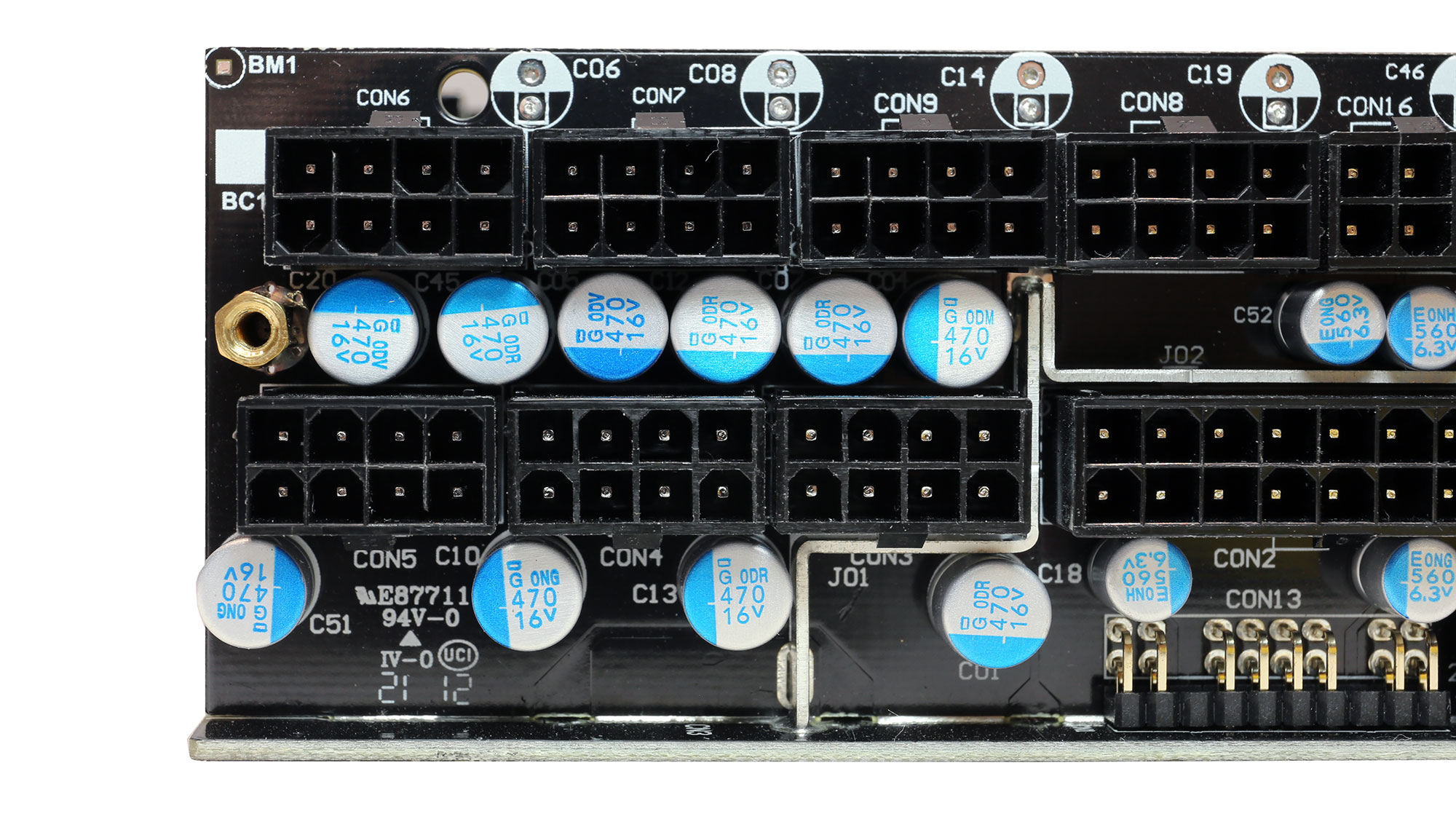

The modular board hosts many polymer caps, for an extra ripple filtering layer.

The main supervisor IC is a Weltrend WT7527RA, supported by a WT51F104 micro-controller.

Soldering quality


Soldering quality is good.

Cooling fan

Hong Hua provides the cooling fan, which uses a fluid dynamic bearing for lower noise output and increased reliability.
MORE: Best Power Supplies
MORE: How We Test Power Supplies
MORE: All Power Supply Content
Current page: Specifications and Part Analysis
Next Page Load Regulation, Hold-Up Time, Inrush and Leakage Current, Efficiency and Noise
Aris Mpitziopoulos is a contributing editor at Tom's Hardware, covering PSUs.